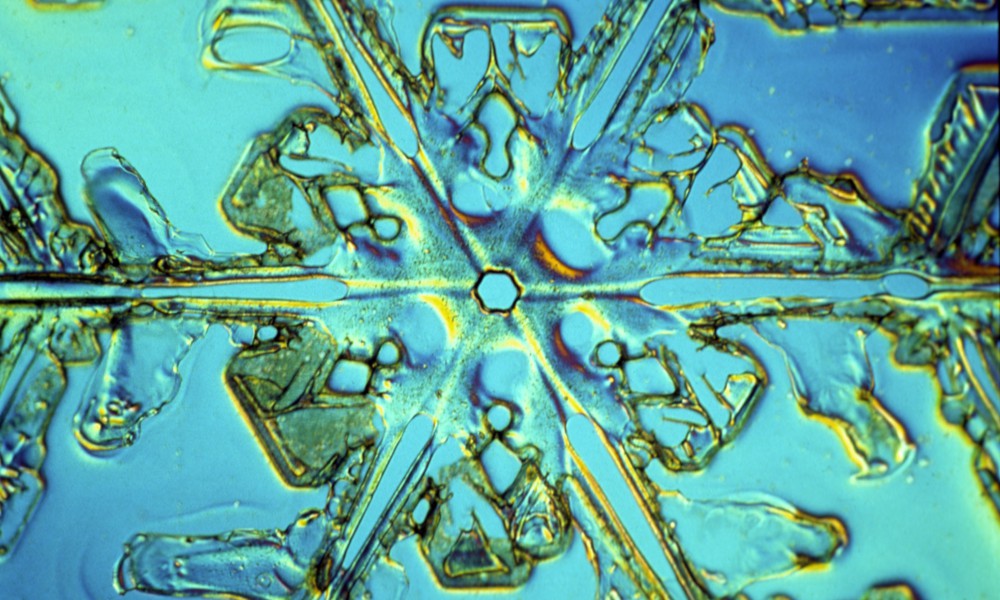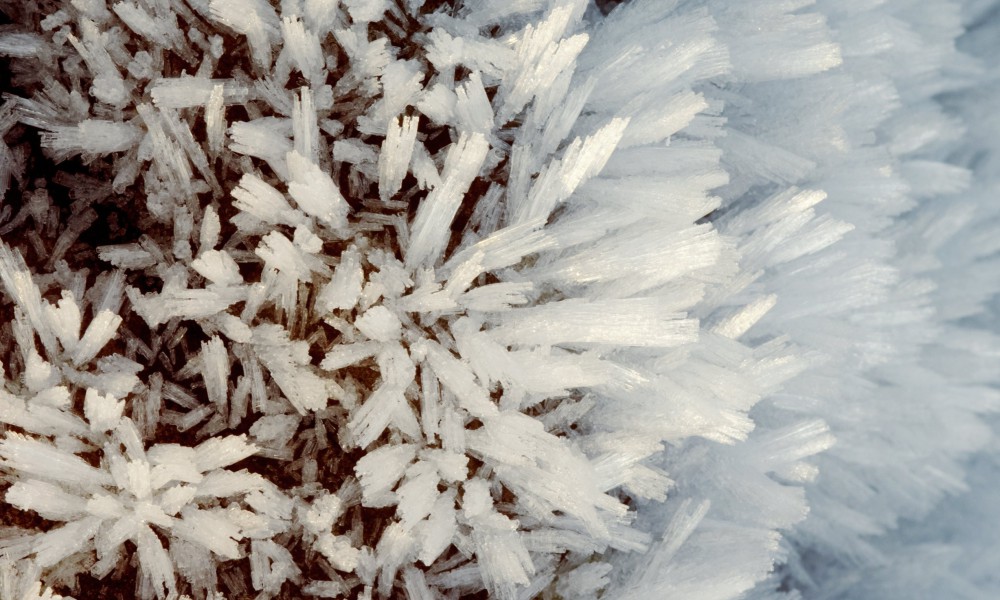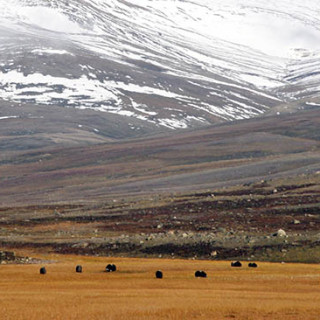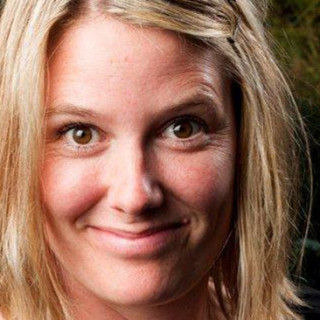When the permafrost thaws
Snow, frost, water and ice – for many years researchers have studied the impact of climate change on the cryosphere, i.e. all the frozen water in the land and sea. So far, the average temperature in the Arctic has risen by over twice as much as in the rest of the world, and glaciers, permafrost and snow cover are changing. This not only has an impact on the Arctic ecology, but could also be crucial for the future climate.
The North Pole has 179 days without sun during the winter. In other Arctic regions as well, the polar winter leaves its mark. Despite darkness and cold, people live all year round in the Arctic, including local cultures such as Inuit and Sami. They live in an environment that is very sensitive to climate change and higher temperatures.
Margareta Johansson, a researcher at the Department of Physical Geography and Ecosystem Science at Lund University, maps how Arctic land regions with permafrost* are affected by climate change now and in future climate scenarios.
“Permafrost is land that is permanently frozen and has a temperature of 0°C or below at least two years in a row. Permafrost is found in around 25 per cent of the land masses in the northern hemisphere and also in continental shelves under the sea”, explains Margareta Johansson.
Thanks to the permafrost, organic carbon remains in the ground and makes the Arctic into one of the world’s largest carbon stores, a store that is estimated to contain around 1 700 gigatons*. With so much carbon bound in the earth, a major question facing researchers is how much of this could be released into the atmosphere if the carbon balance* changes as a result of temperature changes. If more carbon is released, the greenhouse effect will be intensified.
“If more carbon is released, the greenhouse effect will be intensified.”
In her research, Margareta Johansson has manipulated the depth of the snow cover, because a change in climate could lead to increased precipitation. Over seven years, she has simulated extra snowfall in test plots during fieldwork in sub-arctic Abisko in northern Sweden. Using a snow fence, the researchers were able to make the snow lie deeper in the test plots than in the control plots. Measurement of the ground temperature showed that it got up to 10°C warmer in the test plots with extra snow.
“The snow lies like a big thick duvet over the ground and has a huge influence, not only on the temperature in the ground. The entire system is affected when the snow melts and water enters the ground”, she says.
In a number of places, the higher temperatures under the snow cover lead to a thicker ’active layer’, i.e. the top layer of the ground that thaws and freezes annually. For many years, Margareta Johansson has used a metre-long iron probe to measure the depth of the active layer down to the frozen soil. However, in 2012 the probe was not long enough, as the thawed layer under the snow in the test plots had become too deep. So, a possible future scenario is that the thawed layer will become deeper and deeper if rising average temperatures affect the climate system in a way that leads to more precipitation, as many models predict.
The research findings speak loud and clear. But what does it mean for the future?
“That’s difficult to determine. Even if carbon dioxide and methane leak out and potentially increase the amount of greenhouse gases in the atmosphere, with a further impact on the climate, it is possible that, in time, vegetation will also change. Thus more trees, which absorb carbon dioxide, may grow where there were no trees before. There are thus different ways the carbon cycle could change.”
When the permafrost disappears, this also changes water flows, which affects both geophysical conditions and people’s lives. Buildings and roads already have to be constructed with the permafrost in mind, because when it thaws the land moves and water finds new routes.
Margareta Johansson thinks it is important for researchers to disseminate their results and she hopes that they will reach politicians and other decision-makers. She is currently working on a contribution to a scientific synthesis report on the water budget in the Arctic.
“I am contributing with my knowledge of what happens when the permafrost thaws. To summarise, what happens is that the hydrology changes drastically; water becomes available or ceases to be available and land can become wetter or drier as water finds new routes”, concludes Margareta Johansson.
Text: Susanna Olsson
Published: 2014
Facts
-
Arctic ecosystems
-
Arctic ecosystems often act as a ‘carbon sink’. Carbon dioxide is sequestered in vegetation, especially in areas that are grazed by animals such as reindeer or musk oxen. A lot of carbon is also sequestered in areas with permanently frozen ground (permafrost). Because Arctic ecosystems help to reduce the level of carbon dioxide in the atmosphere, they currently have a positive effect on the earth’s climate. A warmer climate with less permafrost could lead to the release of more of the carbon stored in the ground. Greater release of the greenhouse gases carbon dioxide and methane into the atmosphere could in turn lead to a more intensive greenhouse effect and thus an even warmer climate.
-
Definitions
-
Permafrost: permanently frozen ground that has a temperature of 0°C or below for at least two years in a row
1 gigaton: 1 000 000 000 tons
Carbon balance: distribution of carbon within the ecosystem – carbon is found in the atmosphere, ground, lakes and seas, and is stored in animals and plants. The movement of carbon between these parts of the earth’s entire ecosystem is referred to as the carbon cycle.
Hydrology: the science of the water on the landmasses of the earth, its cycle, occurrence, distribution and character
-
Images show
-
Image 1 shows:
Light micrograph of a snow crystal showing hexagonal centre (0.2mm across) from which 6 branches form as the crystal grows. Each crystal is made up from water molecules, arranged with 2 hydrogen atoms making an angle of 105 degrees with 1 oxygen atom. The fixed shape of the water molecule means they can assume a stable crystal arrangement only when arranged as a 6-branched figure. Despite essential hexagonal similarity no two snowflakes are identical because their growth is influenced by temperature, humidity, air currents etc. & these conditions are never identical. Magnification: x60 (35mm size).
Image 2 shows:
Hoar frost crystals on a rock. Hoar frost forms from air that is supersaturated with water vapour. This can occur when moist air cools rapidly. For hoar frost to form the temperature of the surface on which the deposition occurs has to be below the freezing point of water. This results in the formation of many needle-like ice crystals. Hoar frost forms in still, clear and cold weather. These are large crystals, indicating particularly calm conditions. Photographed in Dunvegan, on the Isle of Skye, off the western coast of Scotland.





